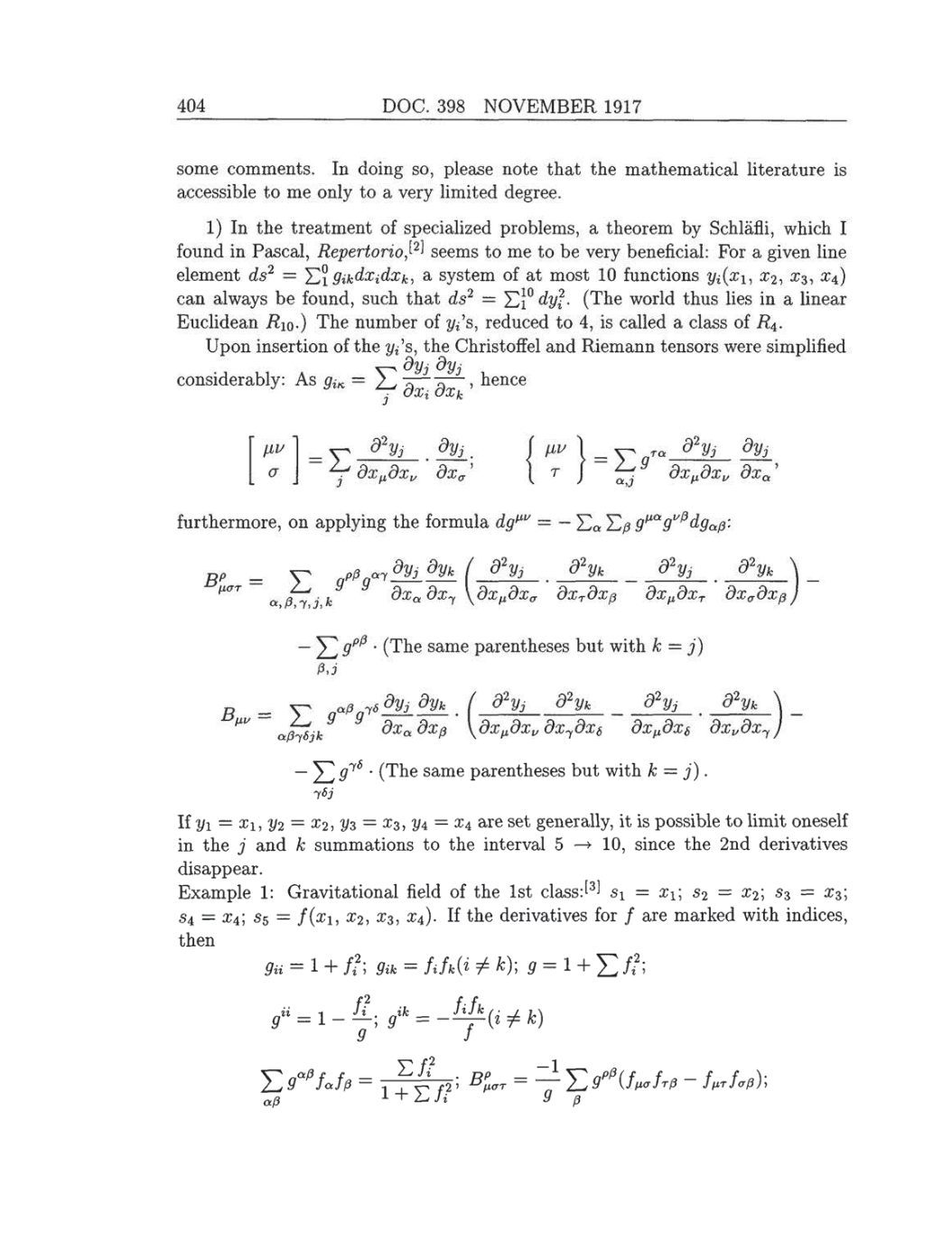404 DOC.
398
NOVEMBER
1917
some
comments. In
doing
so,
please
note
that
the mathematical literature
is
accessible to
me
only
to
a
very
limited
degree.
1)
In
the
treatment of
specialized problems,
a
theorem
by
Schläfli,
which
I
found
in
Pascal,
Repertorio,[2] seems
to
me
to
be
very
beneficial: For
a
given
line
element
ds2
=
Z01gikdxidxk,
a
system
of
at most
10
functions
yi(x1, x2, x3,
x4)
can
always
be
found,
such
that
ds2
= Z101
dy2i.
(The
world
thus
lies
in
a
linear
Euclidean
R10.)
The number
of
yi’s,
reduced to
4,
is
called
a
class of
R4.
Upon
insertion of the
yi’s,
the
Christoffel and Riemann tensors
were
simplified
considerably:
As
giK =
Zdyi/dxi
dyi/dxk,
hence
ixu
Y
32
y3
% y'
ro
d2Vj dVj
a
j
dx^dXv dXp
'
~j dx^dxu
dxa’
furthermore,
on
applying
the
formula
dguv
=
-
Za
ZB guagvBdgaB:
Bp
=
E
9pßgai-
dy3
dyk
(
d2yj d2yk
d29j
d2yk
\
(ICTT
dxadx7 \dxßdxa
dxTdxß
dx^dxr dxadxß)
«./3,7
,j,k
-
EgpBß,j
.
(The
same
parentheses
but
with k
=
j)
B
E
ctß'yÖjk
dyj dyk
dxa
dxß
d2yj
d2yk
dxßdxu
dx-ydxs
d2yj
d2yk
\
dx^dxs dxudxy)
-
Zgrb,rgj
.
(The same
parentheses
but
with
k
=
j).
If
y1 =
x1,
y2
= X2,
y3
= X3,
y4
=
x4 are
set
generally,
it
is possible
to
limit oneself
in
the j and
k summations to
the
interval
5
-
10,
since the 2nd derivatives
disappear.
Example 1:
Gravitational
field
of
the
1st class:[3]
s1
=
x1; s2
=
x2; s3
=
x3;
s4
=
x4;
s5
=
f(x1,
x2, x3, x4).
If
the
derivatives
for
ƒ are
marked with
indices,
then
gu
=
1
+
ƒƒ; 9ik
=
fifkii
7¿
9
=1 +
E
/o
/
=
1
-
?ifc
=
-^(*
fc)
7
J
~g~fafp=
B~
a/i
ILcTT=
